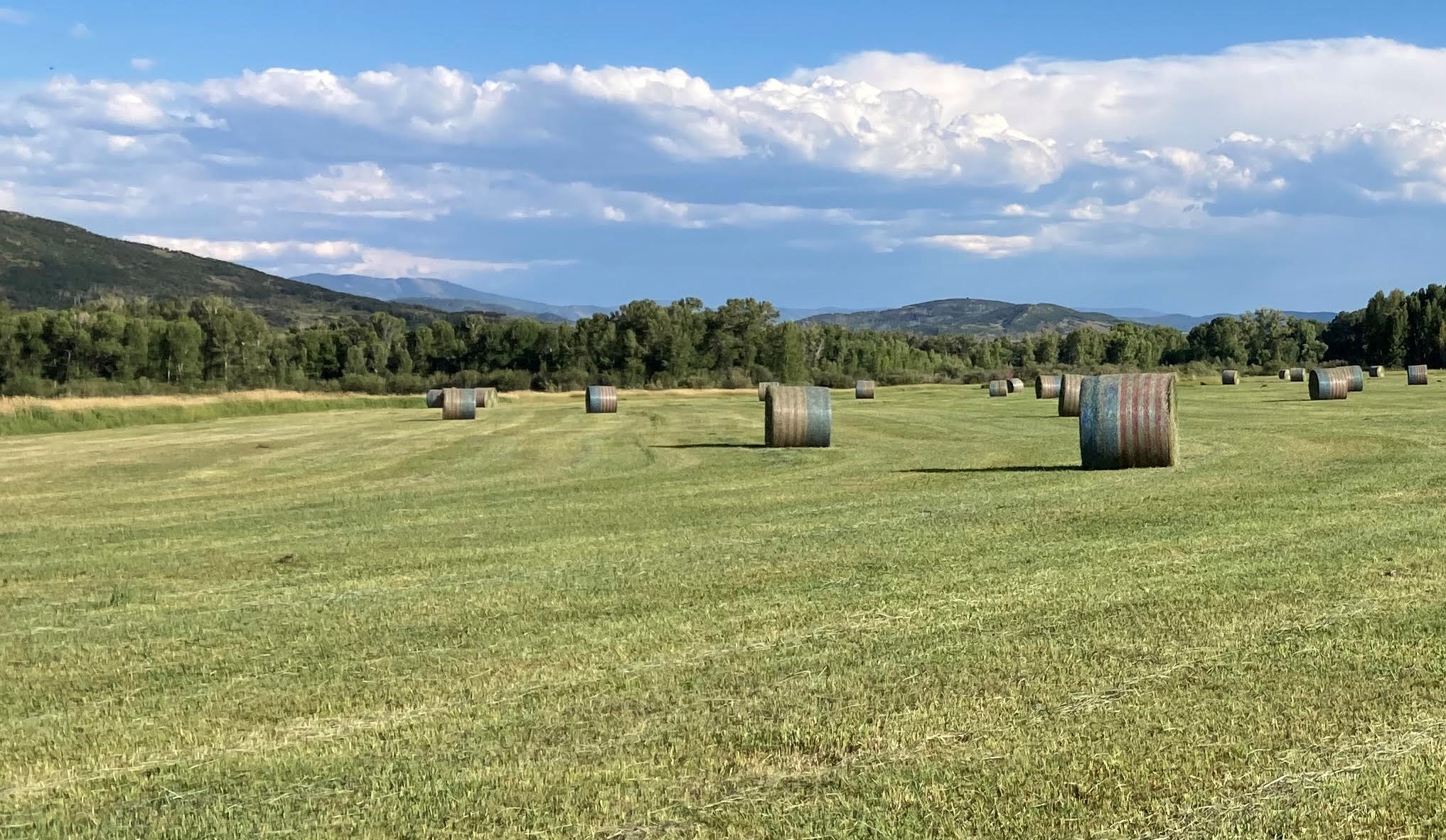Harvesting hay is a significant part of my ranch operation; we need several hundred tons to get our cows, bulls, heifers, and horses through the winter. I am often asked by fellow agents and buyers alike about hay production in our area here in Northwest Colorado. I compiled a list of questions I commonly get, along with my answers based on my personal experiences.
How many cuttings do you get? We typically get one cutting here. Every now and then alfalfa meadows can eke out enough for a second cutting.
How much does a round bale weigh? Round balers come in different sizes but it’s typical to see 5′ – 6′ round bales. Those weigh anywhere from 1,500-1,600 pounds each. It takes a pretty big tractor (around 100 HP!) to pull a round baler and also to move those bales around.
How many tons/acre do you get? This is much more of a nuanced answer but there are some “bookends.” A general rule of thumb is 1/2-1 ton/acre on dryland (non-irrigated) hay, depending on how much rain we get. Irrigated meadows will produce twice as much (1-2 tons/acre); rain and irrigation practices also make a difference. Fertilizer dryland or irrigated meadows can double production as well, depending on how much is applied and good rains following application,.
Do you have to plant the crop? This area of our state has great soils with grass hay that grows naturally, so there is no need to plant the grass meadows. Alfalfa meadows do need to be planted every decade or so.
Hay production can vary wildly depending on rain, wind, cold temperatures, and late frosts. But our long summer days, afternoon monsoons, and fertile soils provide a great foundation for a successful hay crop every year.




